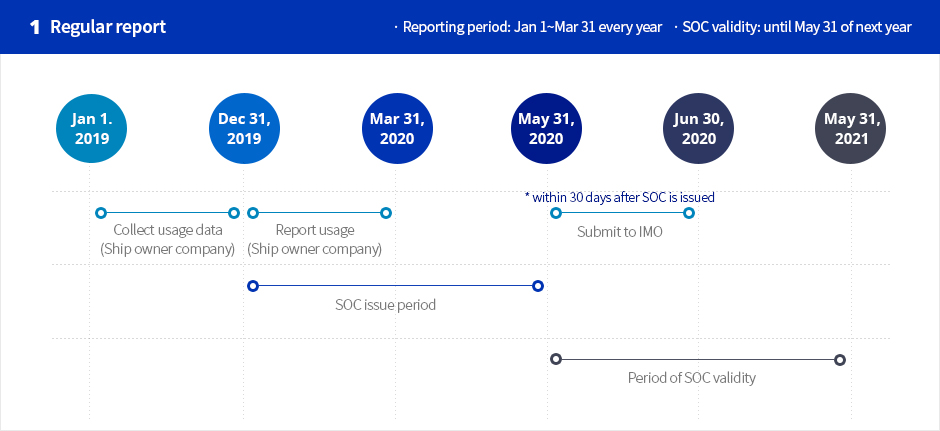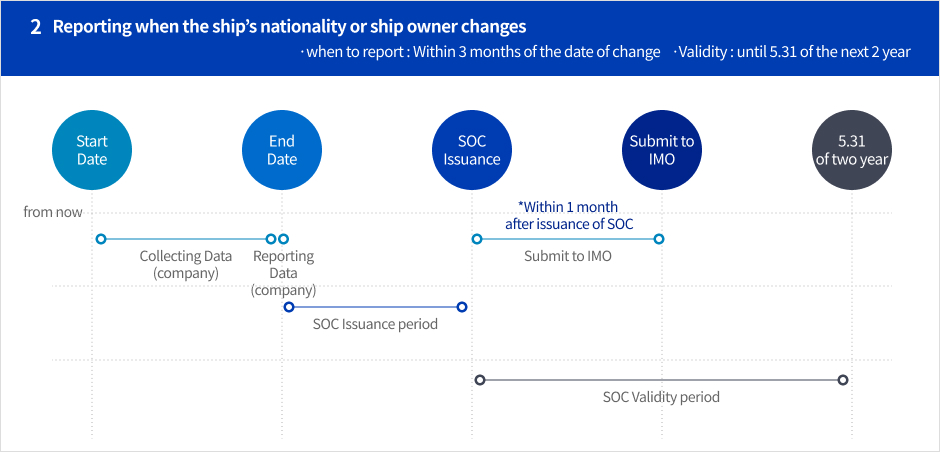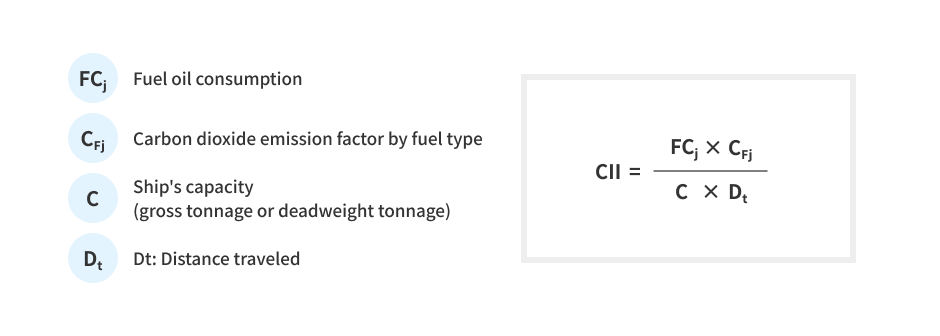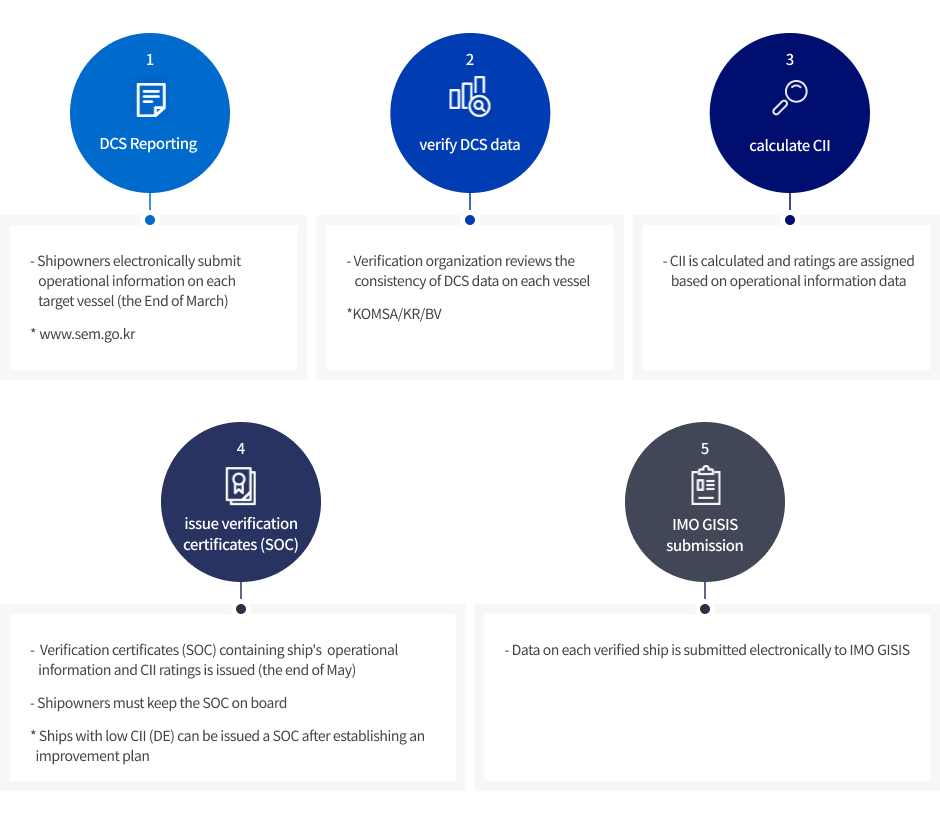What We Do
We will realize the people's dreams, The safest sea routes in the world
IMO Data Collection System
Overview of Ship Fuel Oil Consumption Reporting System (IMO DCS)
Purpose of the System
- Collect operational data, such as fuel oil consumption, operating time, and sea distance, from ships engaged in international voyages to establish strategies for reducing greenhouse gas emissions.
Relevant Laws
- Marine Environment Management Act, Article 41-4 (Reporting of Ship Fuel Oil Consumption)
- MARPOL Annex VI, Regulation 27 (Collection and Reporting of Ship Fuel Oil Consumption Data)
Regulated Entities
- Ships of 5,000 gross tons or above, engaged in international voyages.
Reporting Items
- Basic ship specifications (gross tonnage, deadweight tonnage, etc.)
- Operational data (fuel oil consumption, operating time, sea distance)
Reporting Type
Overview of Ship Operational Carbon Intensity Index (CII)
Purpose of the System
- Calculate the carbon intensity index for each ship using data from IMO DCS, assigning grades from A to E to effectively manage greenhouse gas emissions.
- Ships graded as D or E must develop plans to improve their carbon efficiency.
Relevant Laws
- Marine Environment Management Act, Article 41-6 (Calculation of Ship Operational Carbon Intensity Index)
- MARPOL Annex VI, Regulation 28 (Operational Carbon Intensity)
Regulated Entities
- Ships of 5,000 gross tons or above, engaged in international voyages.
* Exemptions apply to specific ship types.
Calculation Method
The annual carbon dioxide emissions per transport work performed are calculated as:



